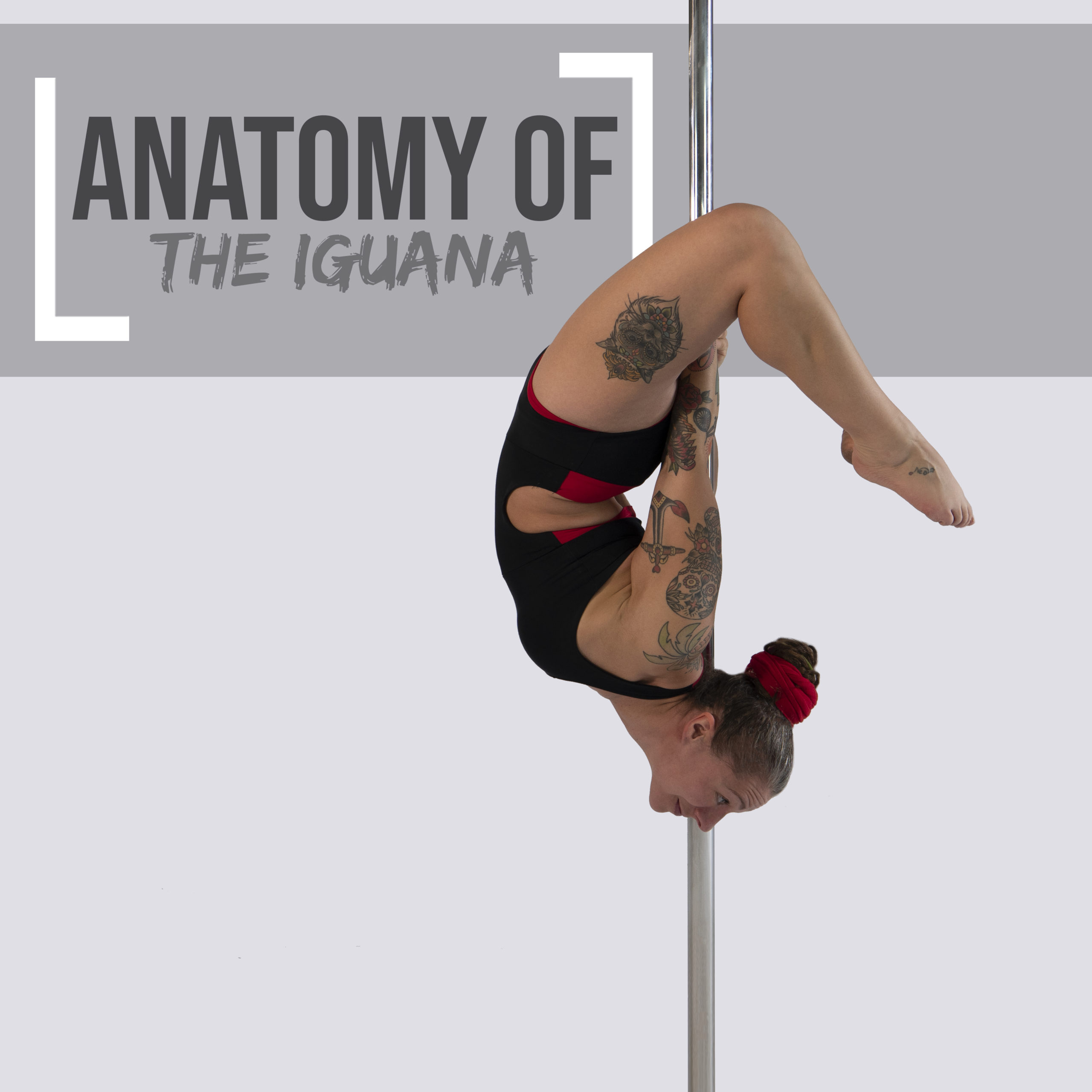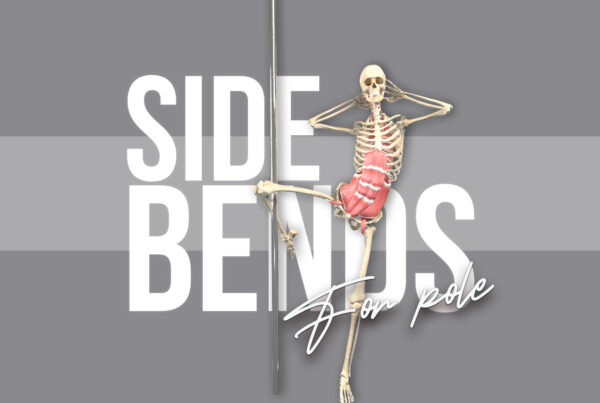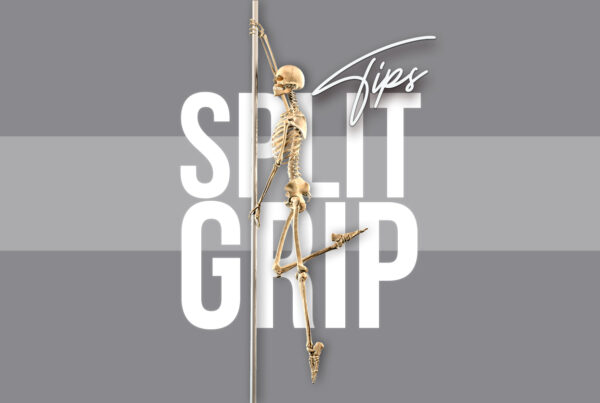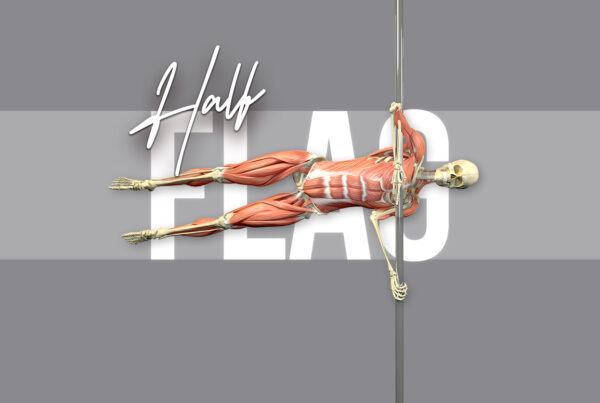This week, as part of my Anatomy of Pole Dance Series, we’re taking a closer look at the Iguana – a pole move that is as magical as its reptilian-namesake with a cheeky reputation for pulling our pants down, quite literally. Iguana from a layback, why you gotta do us like that?
Depantsing aside, the first and most obvious thing to mention about the Iguana is shoulder extension. This is the movement of bringing our arms behind us, like so…
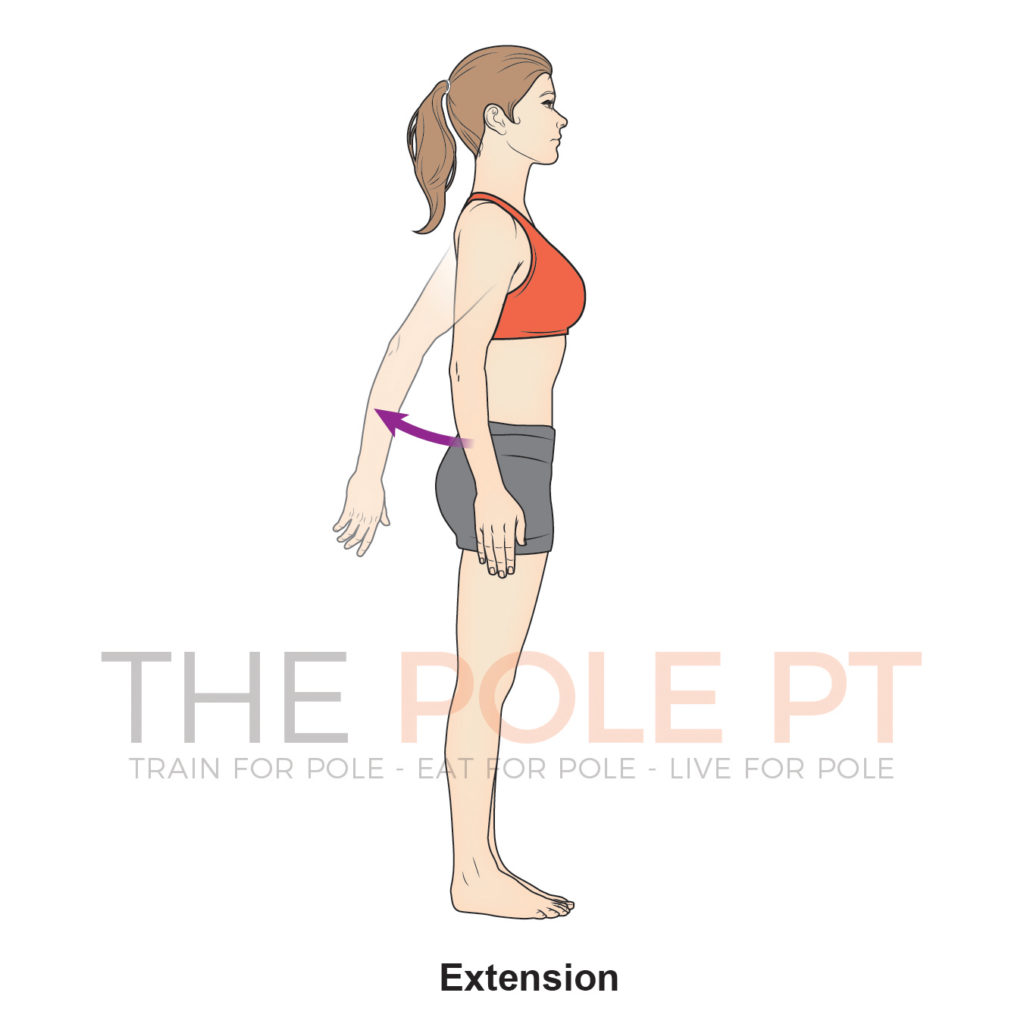
But, exactly how much shoulder extension do we need for the Iguana and how does this differ between the two main entry points of deadlift and layback? The answer might surprise you!
Shoulder extension range of motion for the Iguana
We need somewhere around 40-45 degrees of shoulder extension to set up for our Iguana deadlift from the floor…
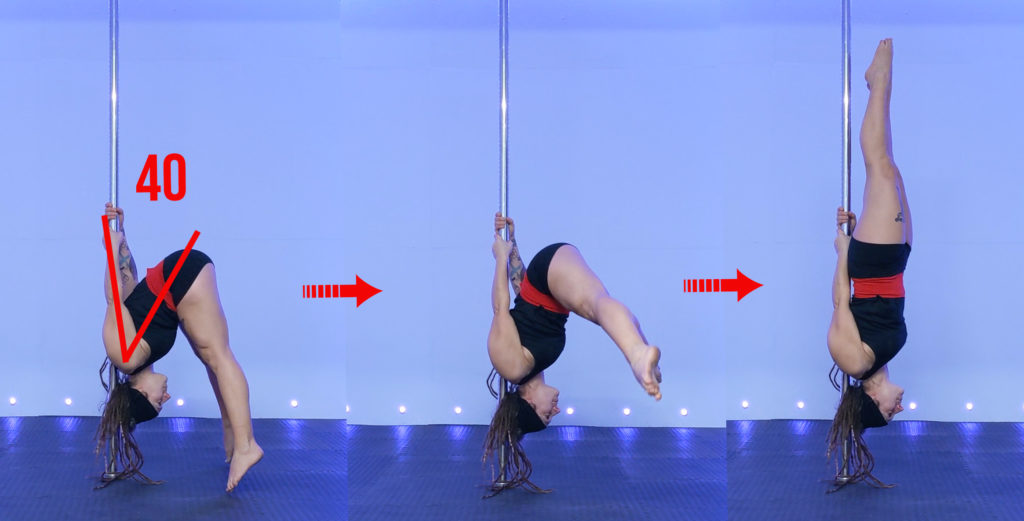
Conversely, setting up for our Iguana from a layback requires a greater range of shoulder extension (but in a bent arm position) to reach the pole behind us (around 60 degrees)…
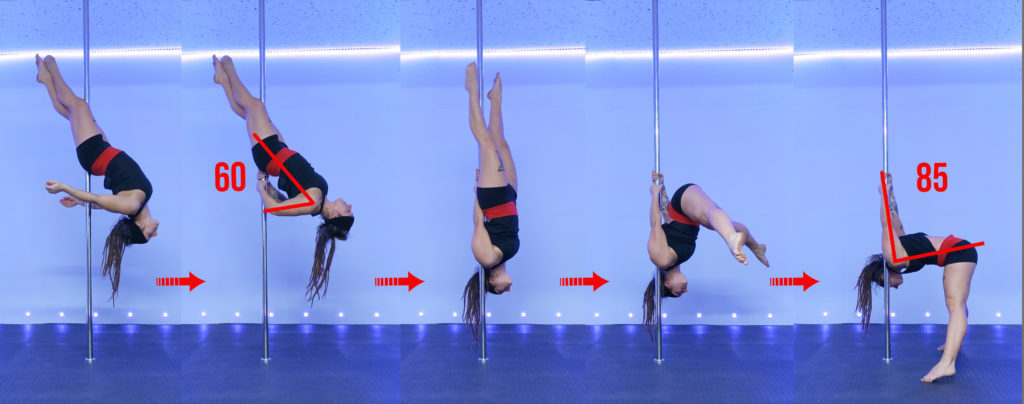
Side note: If you are entering your Iguana from a layback high up the pole and reverse-deadlifting out of it like I did in the photo series above, you will need a much greater degree of shoulder extension for your exit! Because I was higher up the pole, my hips had to come much lower before I could get my feet back to the floor (around 85 degrees of shoulder extension).
There is a lot more going on with this move than just shoulder extension, however, if you feel like a T-rex struggling to reach the pole behind you / you can’t seem to find the right engagement point for your Iguana / you can deadlift this move but not drop into it from a layback, it is worth checking whether your shoulder extension range of motion is restricted! This may well be the missing link to your Iguana domination.
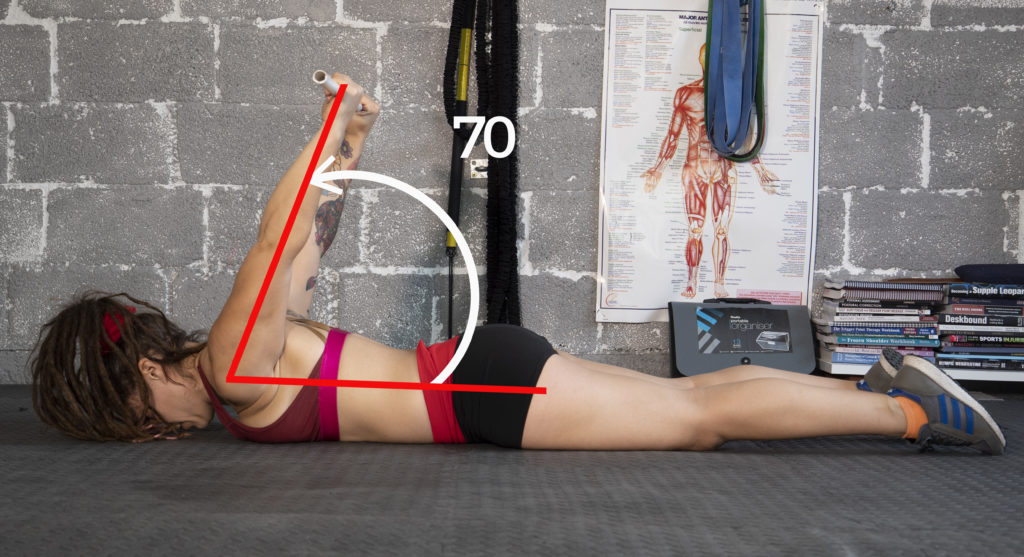
Image above: Shoulder extension test. Taken from my book, Strength and Conditioning for Pole!
A ‘normal’ muggle range of shoulder extension is around 45-60 degrees, which should be plenty to perform most foundational Iguana entries and exits. A recent (as yet unpublished) study by physiotherapist Carlie Huberman on circus artists indicates that professional aerialists tend to have a much larger range of around 90 degrees of shoulder extension.
Given that we can easily end up close to this end range when exiting our Iguana – and particularly if we want to work on more advanced Iguana flag holds in the future, my recommendation is to work towards this 90 degree mark when it comes to your shoulder extension mobility. Remember that it’s important not only to be able to reach this position, but to be strong there, too!
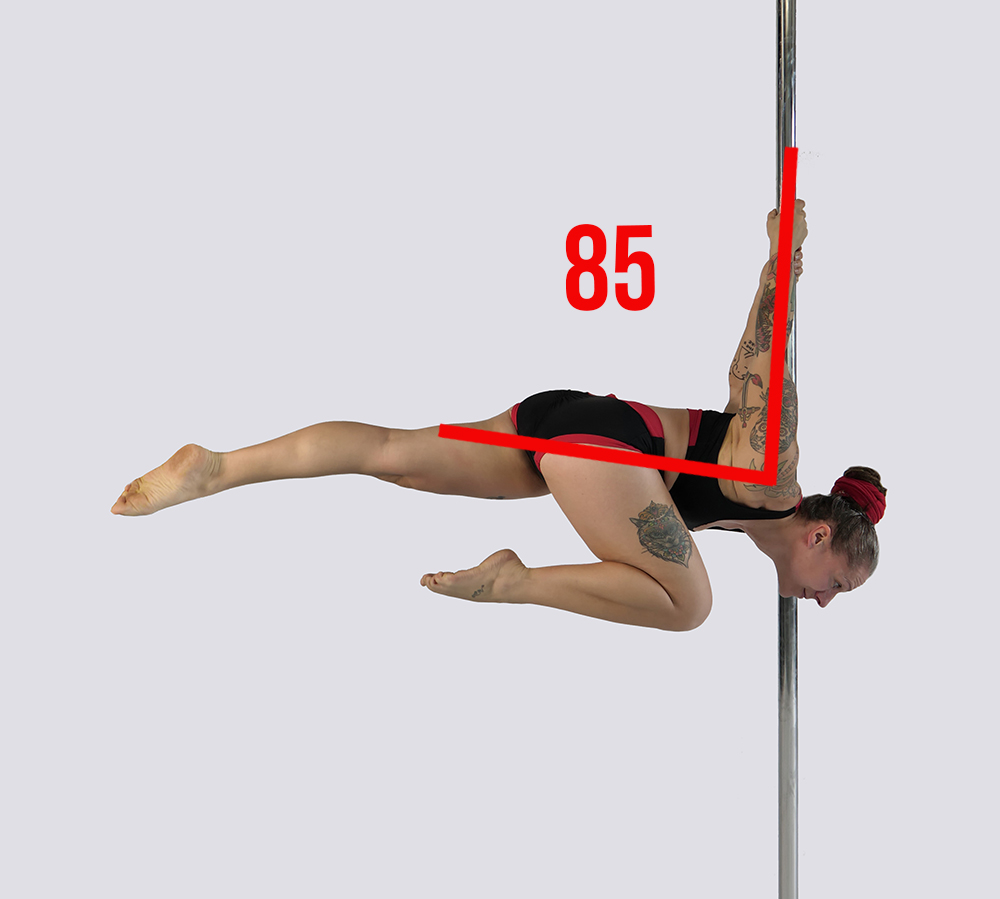
The additional quirks of a vertical apparatus
When it comes to the Iguana and our shoulders, extension isn’t the only thing going on. Other interesting points to note:
- Our hands are holding the pole behind us, which means our arms are also adducted towards the midline of our body.
- Because our hands are stacked, one shoulder will be higher than the other.
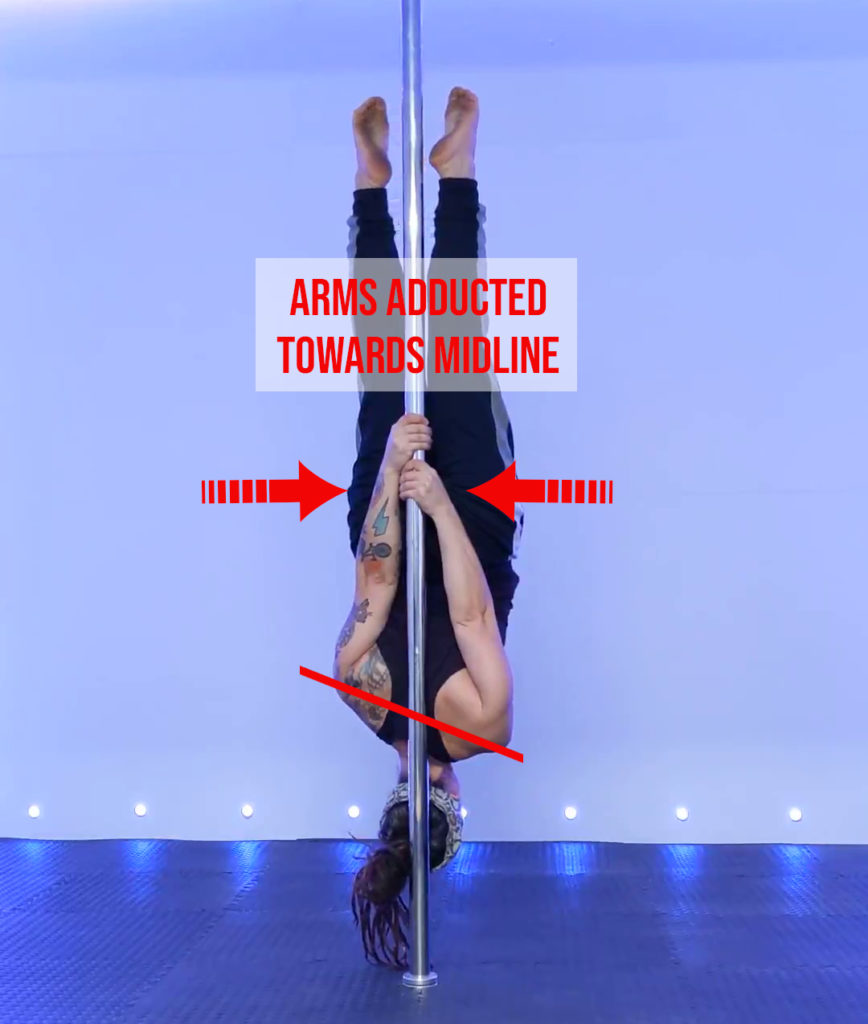
This adduction, asymmerty and the amount of internal vs external rotation of the shoulder can all have an impact on our range of extension.
A little experiment…
Grab a wooden dowel (a broom handle works). Stand up straight and hold the dowel behind you with your hands shoulder distance apart and palms facing the ceiling. Engage your core, keep your ribs down and bring your hands up as far as you comfortably can. Take a video from the side or check yo’ self in the mirror so you can see.
Now, take hold of the dowel behind your back with one hand stacked on top of the other, thumbs down, as you would for your Iguana set up on the pole. Repeat the movement, bringing your hands behind you as high as you can while maintaining your core engagement.
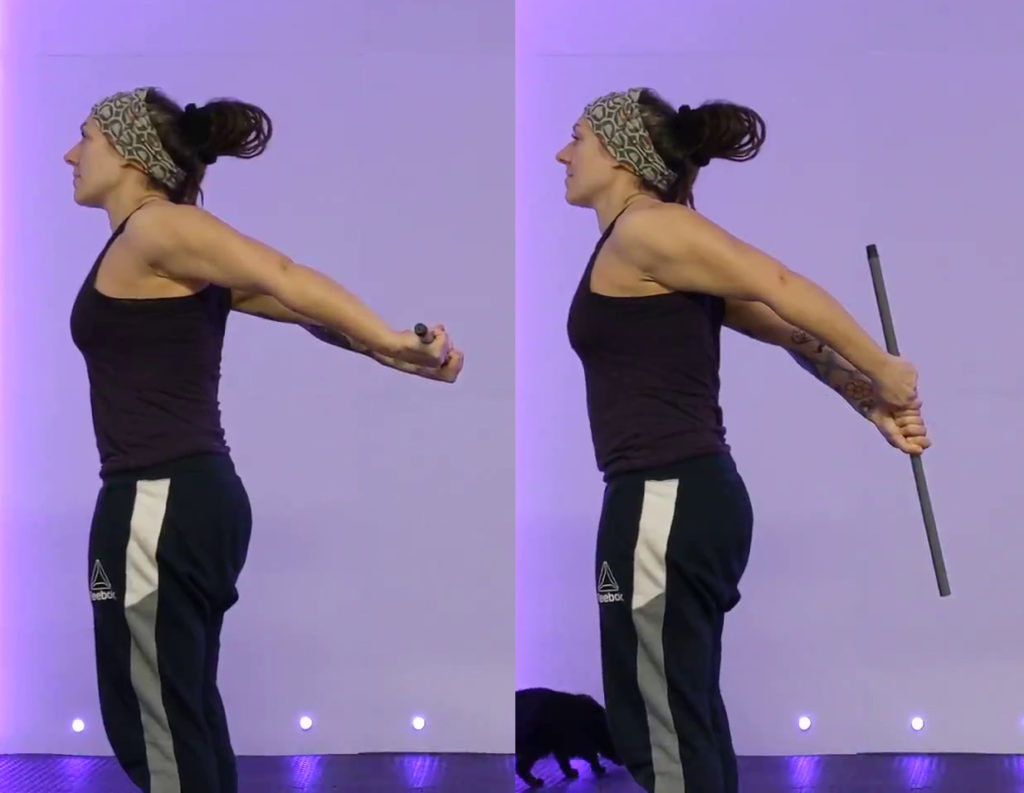
Feel the difference? The fact that we need to be in this position to hold the pole tends to reduce our range of extension and/or make it difficult to maintain a straight arm position.
If you wonder why you can Skin the Cat on rings until the cows come home, but struggle to nail your Iguana, it may be because of the fixed position of the pole and the impact it has on your shoulder rotation and/or the level of adduction required. The advantage of training on rings is that the rings can move freely, which means we can rotate our hands and arms into more optimal positions. We don’t have this luxury with pole, unfortunately.
Iguana shoulder conditioning
For the above reasons, to properly condition our shoulders for the Iguana, it’s important to work not only on our shoulder extension mobility and strength, but also on our rotation, adduction and scapula awareness, too!
If you have created a solid foundation of strength and mobility in your shoulder extension already, then one way you can start to condition your shoulders for the demands of the Iguana is by adding rotational and adduction movement to your shoulder extension drills.
Here’s an example:
You can progress the above exercise over time by gradually increasing the volume (the number of reps/sets you are doing) – and later by adding resistance. Remember that building up and laying over time with consistent and gradual progressions is the safest and most optimal way to progress. It is best to make sure that you are strong and confident in these kinds of movements OFF the pole, before performing them ON the pole with your entire bodyweight!
If you asked me an Iguana question and I didn’t answer it here – stay tuned! I’m not done with the Iguana Anatomy nerd-fest just yet!
If you want to know more about how to programme your training for pole, check out my book – the ultimate pole dance text book! Strength and Conditioning for Pole – 460 pages of pole geeking awaits!


